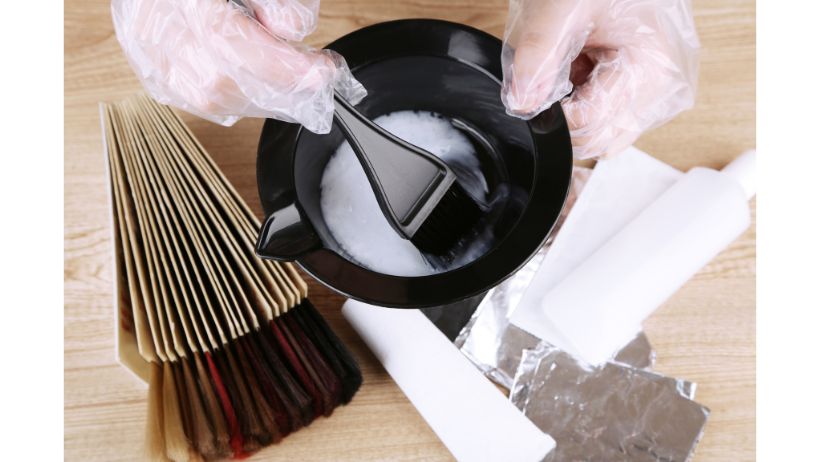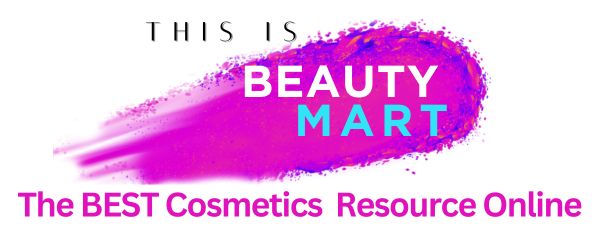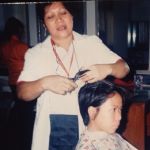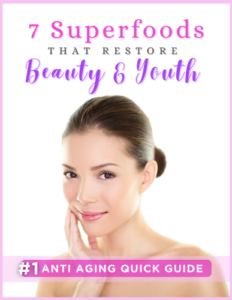Tired of the same old hair color and eager to reinvent yourself, but unsure where to start?
Bleaching, a common method for lightening one’s hair, can be risky if not done properly.
This informative article presents a comprehensive guide on how to bleach hair step by step safely at home without causing any damage.
You can also read our everything-about-hair-bleach guide or if you want something specific, like how to bleach long hair.
Ready? Let’s dive into the world of DIY hair transformation!
Table of Contents
Key Takeaways
How to Bleach Hair Step by Step at Home
Taking the DIY route on how to bleach hair step by step at home can seem daunting, but with the right materials and guidelines, this process becomes much more manageable.
Here’s what you need:
1. Hair bleach powder
2. Cream developer
3. Plastic bowl
4. Tinting brush
5. Gloves
6. Hair clips
Here are the steps:
1. Begin by preparing your hair for bleaching by washing it to remove any buildup.
2. Section your hair into four quadrants for easy application of the bleach mix and secure each section with a clip.
3. Mix two parts of the developer with one part of bleach in a plastic bowl until you achieve a smooth consistency.
4. Put on your gloves before applying bleach to protect your skin from irritation.
5. Start applying the bleach mixture from one inch away from the scalp, working down toward the ends of each section.
6. Leave the bleach on for the recommended time as per product instructions or until desired lightness is achieved, but do not exceed the manufacturer’s maximum timing.
7. Rinse out the bleach thoroughly using lukewarm water, then follow up with a conditioner to restore moisture.
How to Bleach Hair at Home Without Damage
For a smooth and safe home bleaching experience, it’s essential to follow some key precautions.
1. SECTION.
As mentioned above, begin by sectioning your hair into four quadrants. This ensures a neat application of bleach and minimizes the chances of missing any spots.
2. APPLY BLEACH.
Apply the bleach one inch away from your scalp, working it down the length of your hair carefully. This method gives you an even coverage and reduces the risk of damage.
Choosing suitable bleach is also important in preventing ‘hot roots’. Opt for a 20 volume bleach for root application, which can decrease potential harm to your sensitive areas at the base of each strand.
3. COMPLETE, THEN RINSE.
After completing the bleaching process, rinse out thoroughly using lukewarm water. Extreme temperatures may affect newly bleached hair adversely so keeping things moderate is wise here.
4. SHAMPOO & CONDITION.
Follow up with washing your hair but reach for a gentle shampoo and conditioner instead of harsh ones that could strip all moisture from your already dry strands.
Don’t forget to be ready to safely dispose of any leftover bleach you may have.

How to Mix Bleach for Hair
Understanding how to bleach hair step by step at home involves proper preparation and the right materials.
Here’s a simple step-by-step guide on how to mix bleach for hair:
| Materials | Steps |
|---|---|
| Bleach powder | 1. Measure out the appropriate amount of bleach powder as per the manufacturer’s instructions. Remember, most bleach mix calls for a 2:1 ratio of bleach powder to developer. |
| Developer | 2. Measure out the developer next. It is vital to go by the instructions on your particular package as different brands may vary. |
| Non-metallic bowl | 3. Pour the bleach powder and the developer into a non-metallic bowl. It’s important not to use metallic bowls as bleach reacts with metal. |
| Plastic whisk or spoon | 4. Mix the bleach and developer together using a plastic whisk or spoon until a smooth paste is obtained. The mixture should be creamy without any lumps. |
As you follow these steps, be mindful of your safety.
Always wear gloves when handling bleach, and don’t forget to perform a patch test 48 hours before applying the mixture to your entire head.
This will help ensure you don’t have a negative reaction to the bleach.
Dos and Don’ts of Bleaching Hair at Home
In learning how to bleach hair step by step at home, it’s important to know the dos and don’ts. Avoid these common mistakes and follow these tips instead:
Don’t rush the process.
Waiting long enough between bleachings is crucial if you want to achieve your desired lightness. Patience is key.
Don’t wash your hair too soon.
After bleaching, it’s tempting to wash your hair right away, but this can cause damage. Wait at least 24 hours before shampooing to give your hair time to recover.
Do divide your hair into sections.
Sectioning your hair helps you keep track of what parts have been bleached and ensures even coverage.
Do protect your clothes.
Bleaching can be messy, so it’s best to wear old and faded clothes that you don’t mind getting bleach stains on.
Do apply bleach strategically.
Start with the rest of your hair and work from the bottom up before applying bleach to the roots. This will help prevent over-processing the ends of your hair.
How to Bleach Short Hair: Should I Wash or Bleach My Hair First?
When it comes to bleaching and dying your hair, it is essential to consider the order of these processes to achieve the best results.
Do I Wash My Hair Before Bleaching and Dying It?
If you have blonde hair and want to achieve a brighter, more vibrant shade, it is recommended to start by washing your hair with a purple shampoo.
This specialized shampoo helps neutralize any brassy tones in your hair, leaving it looking more ash-toned and cool.
After using the purple shampoo, it is crucial to deep condition your hair with coconut oil to nourish and protect the strands.
Applying the oil evenly and then covering your head with a shower cap allows it to penetrate the hair cuticle and repair any damage from bleaching.
Once your hair is adequately nourished, you can proceed with the bleaching process.
Do You Shampoo After Bleaching?
Before bleaching, it is advisable to have clean, dry hair.
Washing your hair will remove any natural oils and buildup from styling products, allowing the bleach to work more effectively.
However, it is essential to avoid washing your hair on the day of bleaching, as the natural oils act as a protective barrier on the hair shaft.
Additionally, if you have black hair or virgin hair, it is recommended to bleach multiple times to achieve the desired shade.
After the bleaching process, it is crucial to shampoo your hair to remove any residue and neutralize the bleach.
However, it is important to note that shampooing should be done 24 – 48 hours after bleaching to allow the hair cuticle to close, preventing further damage.
By correctly understanding how to bleach hair step by step and using proper technique, you can achieve the best results without compromising the health of your hair.
Conclusion – How to Bleach Your Hair at Home
Achieving beautiful bleached hair at home by knowing how to bleach hair step by step correctly is possible with right precaution and information.
By sectioning your hair, applying the bleach properly, and using the recommended products, you can safely lighten your locks without damage.
Remember to protect your hands with gloves and leave the mixture on for the specified time.
Don’t forget to wash and condition your hair afterward for a gorgeous end result!
FAQs
Q: Can I bleach my hair safely at home?
A:Yes, you can by following learning how to bleach hair step by step safely and using high-quality products specifically designed for home use.
Q: How long should I leave the bleach on my hair?
A: The duration of time you should leave the bleach on your hair depends on factors such as your starting hair color and the desired level of lightness. It is best to follow the instructions provided with the bleach kit for recommended timing.
Q: Will bleaching damage my hair?
A: Bleaching can cause damage to your hair, but taking proper precautions such as using lower volume developer and deep conditioning treatments can help minimize potential damage.
Q: Can I go from dark to blonde in one bleaching session?
A: Going from dark to blonde in one bleaching session is possible, but it may require multiple applications depending on your starting base color and desired result. It’s important to be patient and not rush the process to avoid excessive damage.
Q: How do I maintain my bleached hair after the process?
A: To maintain bleached hair, it’s important to use a gentle shampoo and conditioner specifically formulated for color-treated or damaged hair. Regular deep conditioning treatments, minimizing heat styling, and avoiding harsh chemicals will also help keep your bleached locks healthy and vibrant.
Q: What is hair bleach?
A: Hair bleach is a chemical product used to lighten or decolorize the hair. It is commonly used before applying hair dye to achieve a lighter base color.
Q: How do I prepare my hair before bleaching?
A: Before bleaching your hair, it is important to prepare it by washing it with a clarifying shampoo to remove any product buildup. It is also a good idea to deep condition your hair a day or two before bleaching to minimize damage.
Q: What should I do if my hair texture changes after bleaching?
A: Bleaching can sometimes alter the texture of your hair, making it more porous and prone to dryness. To combat this, use hydrating hair products specifically designed for damaged hair and consider getting regular trims to prevent split ends.
Q: What are the different ways to bleach your hair?
A: There are multiple ways to bleach your hair, including using a powder bleach and developer, using hair bleach kits, or seeking professional help from a hair colorist.
Q: Should I do anything to my hair before bleaching?
A: Before bleaching your hair, it is recommended to section it into smaller, more manageable sections using clips or hair ties. This ensures even application and prevents missed spots.
Q: How do I rinse the bleach out of my hair?
A: After the desired lightness is achieved, rinse the bleach out of your hair using cool water. Avoid hot water as it can further damage the hair. It is also important to follow up with a toner if you want to achieve a specific shade.
Q: Can bleaching your own hair cause damage?
A: Bleaching your own hair can potentially cause damage if not done properly. It is crucial to follow the instructions provided with the bleach product and take utmost care to protect your hair and scalp during the process.
Q: How should I section my hair for bleaching?
A: Sectioning your hair is crucial for even application of bleach. Divide your hair into four sections: left side, right side, back, and top. Use hair clips or bobby pins to secure each section and make it easier to work with.
Q: Can I bleach my dark hair at home?
A: Yes, you can bleach your dark hair at home. However, it is important to note that bleaching dark hair can be more challenging and may require multiple sessions to achieve the desired lightness. It is recommended to seek the assistance of a professional colorist if you have very dark hair.
Q: How do I perform a strand test before bleaching?
A: A strand test is an important step to determine how your hair will react to the bleach. Take a small section of hair and apply the bleach mixture to it. Follow the instructions and timing provided by the bleach kit. After rinsing and drying the strand, check the color and condition of your hair. This will help you decide if you are ready to proceed with the full bleaching process.
Q: What should I use to mix the bleach?
A: A mixing bowl and brush are commonly used to mix the bleach powder and developer. These can be found in most hair bleach kits. Make sure to follow the manufacturer’s instructions for proper mixing ratios.
Q: How can I protect my clothes while bleaching my hair?
A: It is best to wear old clothes or use a cape or towel to protect your clothing from any bleach splatters. Bleach can stain and damage fabric, so it is important to take precautions.
Q: What are some best ways to lighten naturally dark hair?
A: Lightening naturally dark hair can be challenging, but there are a few techniques that can help. Start by applying the bleach to the bottom sections of your hair first, as they tend to be lighter. Then, move on to the tips and finally the roots. This can help achieve a more even, natural-looking result.
Q: How do I rinse the bleach out of my hair?
A: After the desired level of lightness is achieved, thoroughly rinse the bleach out of your hair with lukewarm water. Make sure to rinse until the water runs clear, indicating that all the bleach has been removed. Follow up with a gentle shampoo and conditioner to restore moisture to your hair.
Q: Can I bleach my hair and tone it in the same session?
A: Yes, it is possible to bleach your hair and tone it in the same session. However, it is recommended to consult a professional colorist for this process, as it requires a good understanding of color theory and the proper products to use. Bleaching and toning can be a complex process and it is important to avoid over-processing or damaging your hair.
Q: How can I bleach my hair at home?
A: Learning how to bleach hair step by step at home is easy and can be done in a few simple steps. You just need to prepare your hair and follow the instructions carefully. Check out the step-by-step guide above this article.
Q: How do I section my hair before bleaching?
A: To section your hair before bleaching, you can use hair clips or hair ties to divide your hair into small sections. This will make it easier to apply the bleach evenly.
Q: How do I rinse my hair after bleaching?
A: After the desired lightness is achieved, you should rinse your hair thoroughly with lukewarm water. It’s important to remove all the bleach from your hair to prevent further damage.
Q: How often can I bleach my hair?
A: Bleaching your hair too often can cause damage, so it’s recommended to wait at least two weeks between bleachings. This will give your hair enough time to recover and minimize the risk of hair fall or breakage.
Q: Can I dye my hair immediately after bleaching?
A: It’s not recommended to dye your hair immediately after bleaching, as the hair needs time to recover from the bleaching process. It’s best to wait at least a few days before coloring your hair.
Q: How can I keep my hair from drying out after bleaching?
A: To keep your hair hydrated after bleaching, you should use a deep conditioning mask regularly. This will help restore moisture to your hair and prevent it from becoming dry and brittle.
Q: How long does it take for bleached hair to turn a lighter color?
A: The time it takes for bleached hair to turn a lighter color depends on your hair color and the level of lightness you want to achieve. It can range from a few minutes to several hours.
Q: How can I maintain the color of my bleached hair?
A: To maintain the color of your bleached hair, it’s important to use hair products specifically for color-treated hair. Also, avoid excessive heat styling and protect your hair from UV rays by wearing a hat or using a leave-in conditioner with UV protection.
Q: What is the best way to bleach dark brown hair?
A: Bleaching dark brown hair can be a challenging process as it requires removing the natural pigments from the hair. It is recommended to use a higher volume of hydrogen peroxide and seek professional advice for achieving even and desired results.
Q: Can I bleach my hair if it is wet?
A: No, it is not recommended to bleach your hair when it is wet. Wet hair may lead to uneven results, and the bleach may not be able to lift the color effectively. It is advisable to make sure your hair is dry before starting the bleaching process.
Q: How do I choose the right volume of developer for bleaching?
A: The volume of developer you choose for bleaching depends on the current hair color and the desired level of lightening. Generally, a higher volume of developer is required for darker hair. It is advisable to seek expert advice or consult a hair stylist to determine the appropriate volume for your specific hair needs.
Q: How often can I bleach my hair?
A: Bleaching your hair too frequently can cause a lot of damage. It is recommended to wait at least a couple of weeks between bleaching sessions to allow your hair to recover and maintain its good condition.
Q: How do I prevent orange tones when bleaching my hair?
A: To prevent orange tones when bleaching your hair, you can add a few drops of lemon juice to the bleach mixture. Lemon juice helps to balance the warm tones and can help achieve a more desired shade. It is essential to be cautious with the amount of lemon juice added to avoid excessive damage to the hair.
Q: Do I need to cover my hair when using bleach?
A: Yes, it is advisable to cover your hair with a plastic bag or shower cap after applying the bleach. This helps to create a warm environment that supports the bleaching process and prevents the bleach from drying out too quickly.


